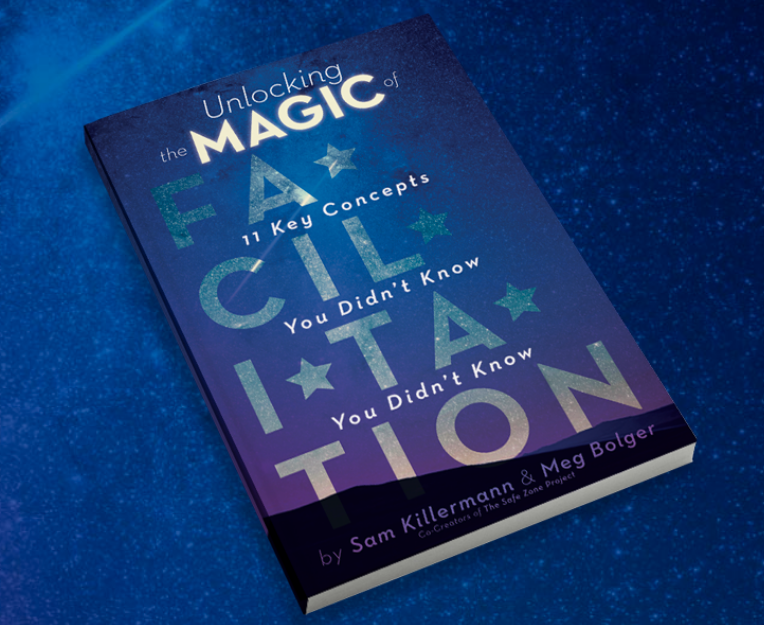Currently Reading: Keeping the Magic in Facilitation
By Sarah Axelson, MSW | May 15, 2018
I’m a training and facilitation nerd. Anyone who knows me knows I embrace that label and use it lovingly. I’m constantly trying to think of new, more engaging ways to help people learn.
I’m so entrenched in this work that at a recent dinner with friends, as we were settling our tab, I found myself digging through my purse searching for my wallet. It finally turned up under a copy of one of the books I’m currently reading: Unlocking the Magic of Facilitation: 11 Key Concepts You Didn’t Know You Didn’t Know by Sam Killermann & Meg Bolger.
Some of you may recognize Sam’s name. He authored an earlier book, A Guide to Gender: The Social Justice Advocate's Handbook, and has a pretty well-known Ted Talk. Most of his work has focused on gender and sexual orientation, so I was intrigued when I saw that he had co-authored a book specifically on facilitation. It’s a key component of the work that my team does at ETR.
An opportunity to read a new book about a topic I love? Count me in!
I Love the Magic
One of my favorite things about this book (besides it being a quick read that I devoured in two days), was the way the authors framed facilitation. When facilitation is done right, they tell us, it’s magical.

I’ve often felt that way about facilitation. It takes a certain audacity, or finesse, or some special quality that I could never quite give the right name to. You know it when you see it done well. The light goes on in a trainee’s head, and the moment just feels….special. That instant, that feeling of it all coming together, is what we, as facilitators, are always striving for.
Unlocking It
Unlocking the Magic breaks it down for us: the authors tell us how to create more of those moments. They share hands-on strategies that facilitators can use, but they don’t dive too deeply into actual activities—it’s the strategy, not the activity, that’s making the magic! The authors build this into 11 key concepts (all of which are also shared on their website):
1. Understanding Facilitation as a Nuanced Skill
2. Facilitation vs. Teaching vs. Lecturing
3. Being Neutral
4. How to Read a Group
5. Both/And is Greater than But/Or
6. The “Yes, and…” Rule
7. Asking Good Questions
8. Safe Spaces for Vulnerability
9. Triggers
10. Learning from Emotions
11. Role Modeling Continuous Learning (or The Myth of the Expert)
Practical, Humorous, Digestible
Not all of these concepts are new to me. I’ve been a facilitator for a long time and I’ve learned from some of the greats. Even in the familiar parts, however, I appreciated the practical examples the authors gave of what these concepts look like when they’re applied in training spaces.

They distill big, conceptual topics into bite-sized, easily digestible pieces. And they sprinkle them with a dash of humor and robust visual imagery: “Avoid using the word ‘but’—don’t manifest polar bears.” (You’ll get it once you read it, I promise.)
This book is a great read for novice and seasoned facilitators alike. It’s a wonderful reminder that there is so much more that goes into delivering a great training than having a good topic and picking fun activities. We can all benefit from the tips Sam and Meg provide. They are working on a more expanded version of the book that is forthcoming.
I’m looking forward to reading it when it’s available. For that, I’ll have to get a bigger purse.
Sarah Axelson, MSW, is the Director of Training at ETR and an inveterate reader of books about professional development. That’s only one of the reasons she’s such a great trainer.




